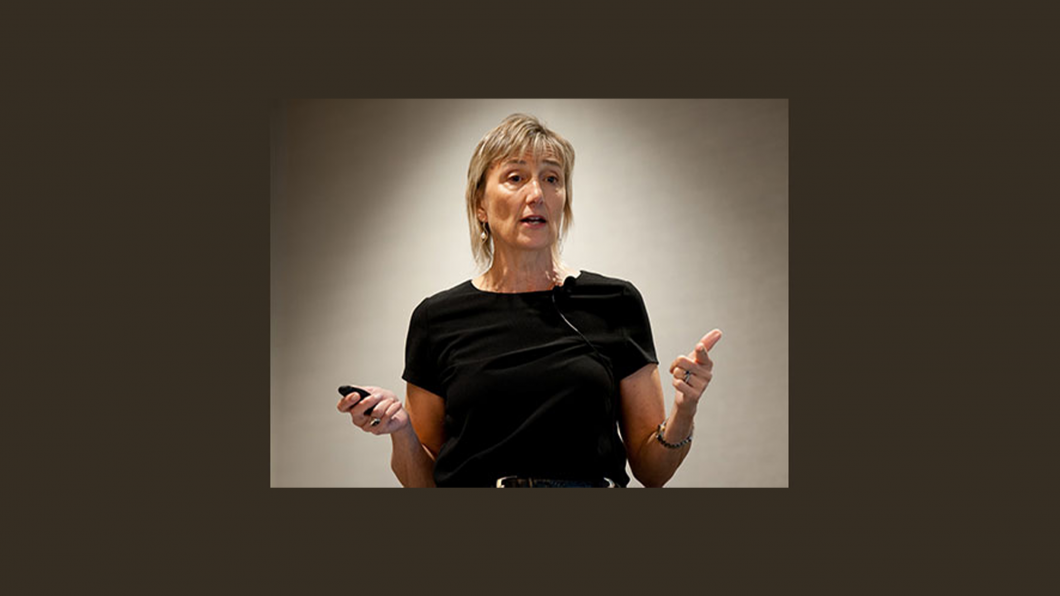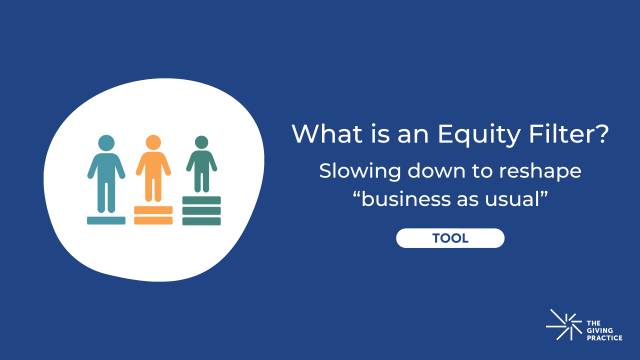
Mark Sedway: What does reflective practice mean to you?
Janis Reischmann: To me, reflective practice in philanthropy means we—practitioners in philanthropy—are employing techniques or tools to intentionally step back and explore what’s happening in processes, especially difficult ones, and using the answers to those questions to improve or sharpen our practice. It also says to me that the field is mindful of the role the individual plays in the craft of philanthropy…that it is not just about data, money, strategies or deadlines. The personhood we bring to philanthropy is an important element and is worth developing and sharpening.
MS: What reflective practices do you use in your work to do that stepping back and exploring?
JR: One practice I use is a non-traditional form of journaling. I use it before, during and after meetings and events in different kinds of ways. When I’m feeling really anxious and overloaded, it can be a pause to make a list of what’s making me anxious and suddenly I feel I have a handle on it. Sometimes I feel too busy to take even two minutes to do this, but of course I’m not. In advance of a meeting, I’ll outline my thoughts and jot down words or phrase I want to communicate. During a meeting, I’m better if I can jot down thoughts. It crystalizes things for me and helps me to focus more in the moment. Sometimes I’ll offer a summary of what I just heard to see if I’m tracking. After a meeting I do better if I do summary notes. It helps me process what occurred and think about what’s next. It’s a summarizing practice.
MS: Is there a dilemma or situation in your work that the journaling helped you reckon with? What happened? Why was the situation challenging for you?
JR: Over the past several years a group of grantees, co-workers and I have been working on a participatory evaluation plan. It’s so hard and dense. It complicated by the fact that it is loaded with values. The foundation has one set of expectations, grantees have others. Lots of complexity in this. I’ll find myself in those meetings needing to do a verbal summary. Am I hearing this right? Or I’ll do that at the end of the meeting—share a summary and see if I got the key points from everyone. It’s a way of recording and checking that we’re all on same page and seeing patterns and surfacing themes.
MS: It seems like that reflective practice gets you to a co-creating stance with your grantees, which I’m sure is hard to do generally but especially with evaluation. Any other reflective practices that you use?
JR: One thing I’ve been working on is being quiet and being a better listener. It’s hard for me. I get so excited I want to jump in and don’t let people finish their thoughts. They can feel disrespected. So I do a very simple body thing: I put my fingers over my mouth, in a “hmmmm” pose. It’s something I’m working on when I’m in conversations. It’s a quieting technique, a mental and physical pause to myself.
MS: What a great way to get to a reflective place internally. What is an example of a situation where you do this self-quieting?
JR: I am working with a new grantee. She and I come from very different life experiences and different backgrounds. We are struggling to find common language. I’m so mindful of the differences and trying to find common places. She’s from a community that has often been told what to do and not been listened to. I’m trying to be intentional about not over-offering and I want her to have lots of space to express herself. We recently were meeting and I put my fingers to my mouth and listened and tried to let her feel she had space. By doing this I’m reminding myself to give her room and to listen more carefully.
MS: A lot going on in that example. Could you identify some of issues in that particular situation that you consistently encounter as a grantmaker?
JR: I think the most problematic issue for me is making assumptions and not checking them out. That is, assuming I know. Or assuming we are in agreement. We need to put assumptions forward, check them out and redraft when they’re off track.
MS: How does your summarizing practice help with that?
JR: The result of all that below-the-waterline stuff is there’s a lot going on in the room. Trying to periodically say what have we come to and surfaced and concluded helps to keep me tracking, helps to bring some sense of movement to the group, and helps to surface what is sayable. By “sayable” I mean what we’ve come to or believe we’ve come to. It’s the intersection of feelings and ideas. It’s what comes out of hard conversations where people are committed to digging deep and sharing ideas or concepts that incorporate the emotions and values that may surround those ideas. It’s important to say these things because that gives them a form of life and validity. And, it lets us check them out with others. I think trust helps people surface what is sayable.
MS: Do the reflective practices you’ve mentioned—the journaling, summarizing or self-quieting—take you out of your comfort zone at all? Do they put you in a position where you feel awkward or vulnerable, or go against the flow of your organization’s conventions?
JR: My comfort zone is blurting out everything that’s top of mind. The self-quieting makes me antsy. It takes me out of my comfort zone but into a better place. It’s a discipline. I find comfort in the summarizing practice, but there are risks associated with it because I say what I think is going on and I may be way off. There’s a chance people will say “What? That’s not what’s going on at all.” Or even worse, they won’t say anything and just leave feeling less understood. I probably only use the summarizing technique when I feel okay in the group.
MS: Why do you think reflective practice is important to philanthropy practitioners generally?
JR: It helps us gain insight into what we’re doing and what we need to pay attention to. It’s not magic. It’s intentionality. When we were planning the reflective practice workshop, I took the concept to my book club of women who have worked with funders. From their experiences working with funders, they were really excited about it for organizations, not just individuals. How do you move philanthropic organizations to a state of reflection? We can be so full of ourselves and oblivious. It’s the failing of our field. How do we listen better, reflect on what’s working and what’s not, get out of our protective place, and recognize that our voice isn’t the only one in the room?
For more information about Reflective Practices, please click here.



